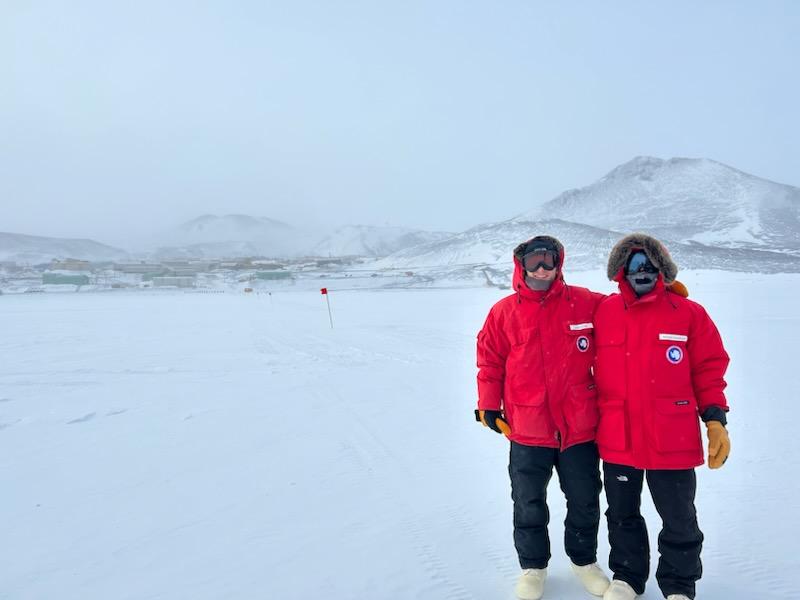By Michael Rodriguez
Today Jacob and I learned all about sea ice and how to traverse it safely. Even though the ice is very thick overall, it is full of many different kinds of hazards.
Here are some of the types and features of sea ice we learned about:
- pack ice
- fast ice
- floes
- frazil ice
- ice bergs
- old ice
- polynya
- pressure ridge
The main hazards for traversing the ice for us are cracks and pressure ridges. Cracks form as different forces are exerted on the ice such as newly formed ice pressing into existing ice, currents, and rising and falling tides. After cracks form they can be shoved back together to form pressure ridges. They can also grow wider in repeated steps. When that happens the ice at the center of the crack can be very thin Today we learned how to evaluate whether these features can be safely crossed with the specialized vehicles called Pisten Bullys that are used to travel on the ice.
Here are some photos of our day.

Eleven scientists whose work requires them to travel on the ice did the training. We rode out onto the ice and vehicles called Hagelands.

These happy scientists in the Hageland are excited for their training.

Our instructor Mitch
The first step after finding a crack is to use a probe to determine the edges of the crack. Then a shovel is used to remove snow from a cross section of it. Then a hole is drilled in various places of the crack and the depth of the ice is measured through each hole. For this crack, the ice beyond the crack was well over a meter (3′) thick but the center of the crack was only 14 cm (6″) thick. However, the width of the thinnest ice was very narrow so this one was safe to drive across.

Shoveling snow out of a cross section of the crack.

Drilling a hole to measure the thickness of the ice.

Jacob and I celebrating the completion of all our training. Now we can get to work. Jacob’s first ever Antarctic dive is tomorrow! Check back to see how that goes!

